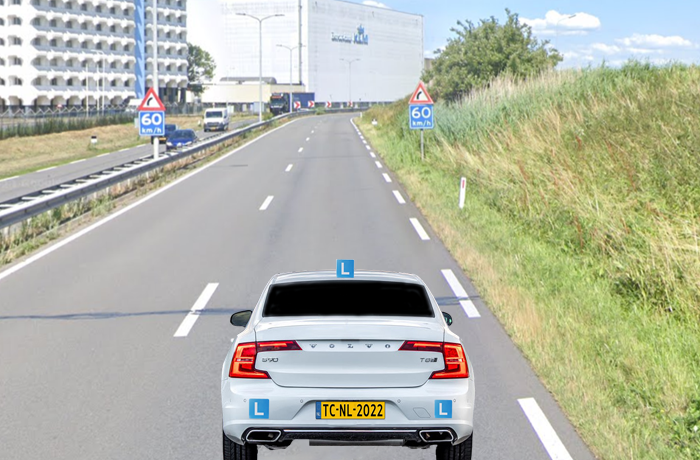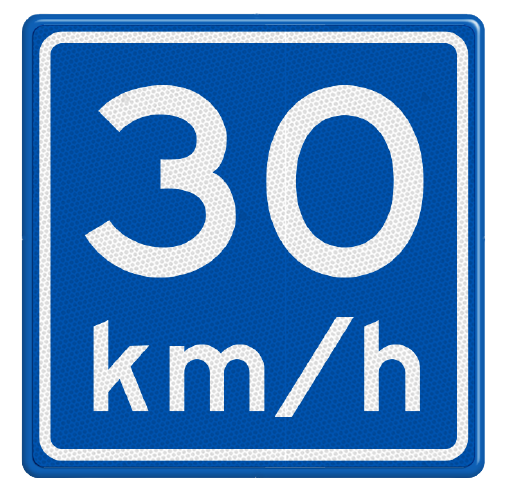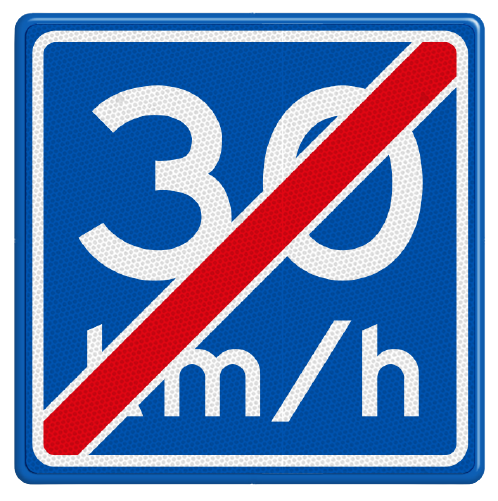Recommended speed

An recommended speed is given in situations where the government deems it wiser to drive a little slower. This is usually at dangerous bends and other hazardous situations.
If possible, the sign is combined with a traffic sign indicating the nature of the danger. The photo shows a combination of the sharp right bend sign with the recommended speed sign.
Do bear in mind that this is an recommended speed, you may drive faster than advised, but remember that these signs are there for a reason.
Now you may then also ask yourself why then does the government place these signs. If it is not considered safe to drive faster here, they could just put up a speed limit sign. People used to do that too, the government had rules and you just had to follow them. Nowadays, they want to put some of the responsibility on the drivers themselves.
The recommended speed applies to favorable road and/or weather conditions. If the road surface is not good or dry, it is better to drive even slower than the recommended speed. But of course, this also applies without an recommended speed sign.
The matrix signs indicating a speed above the road do not indicate an recommended speed, but a maximum speed!
Drivers with good local knowledge often drive much faster than advised here.
Drivers of trucks and buses often drive even slower than the advised speed here.
There can be big differences in the speed driven by different drivers.
Keep a close eye on rear traffic too. Hurried, locally known drivers may want to overtake.
This sign is only applied if the advisory speed is at least 20 kilometers per hour lower than the permitted maximum speed.
Application takes place if it is not clear and foreseeable from the driver’s point of view that it is better to reduce speed.
The end of an recommended speed is indicated by means of the same sign, but with a red line across the recommended speed. After this sign, the normally applicable speed limit applies.
 To indicate that a point can be passed more safely at a lower speed, they place sign A4, recommended speed. If you adopt this recommended speed, you can safely follow a certain point, for example a sharp bend.
To indicate that a point can be passed more safely at a lower speed, they place sign A4, recommended speed. If you adopt this recommended speed, you can safely follow a certain point, for example a sharp bend.
In recreational areas outside built-up areas, an recommended speed may be applied if many recreational users stay on these roads.
 You do not always have to expect sign A5, end of recommended speed. If it is logical that after a bend, for example, the normal speed limit can be driven again, sign A5 is not placed.
You do not always have to expect sign A5, end of recommended speed. If it is logical that after a bend, for example, the normal speed limit can be driven again, sign A5 is not placed.
